After the disastrous performance of Germany at the World Cup in Russia, head coach Joachim Löw announced a radical change in terms of the tactical concept and the players of the national team. Löw admitted his mistake to hold on to his possession-based approach without finding the right balance between offence and defence.
Indeed, Germany struggled with preventing counter-attacks and thereby conceded goals right after losing possession. Moreover, Die Mannschaft missed creating goal-scoring opportunities against the low-blocks of South Korea and Sweden. Almost typical of the German mindset, passion and the willingness to run were demanded for future matches. Furthermore, Löw undertook some changes in Germany’s style of play with the beginning of the Nations League.
But is the approach a promising one for the future of the German national team? We will try to find answers to that in the following analysis.
Tactical setup
The change should begin with the establishment of a different system. Löw set his team up in a 4-1-4-1 formation instead of the 4-2-3-1 he used at the World Cup in Russia.
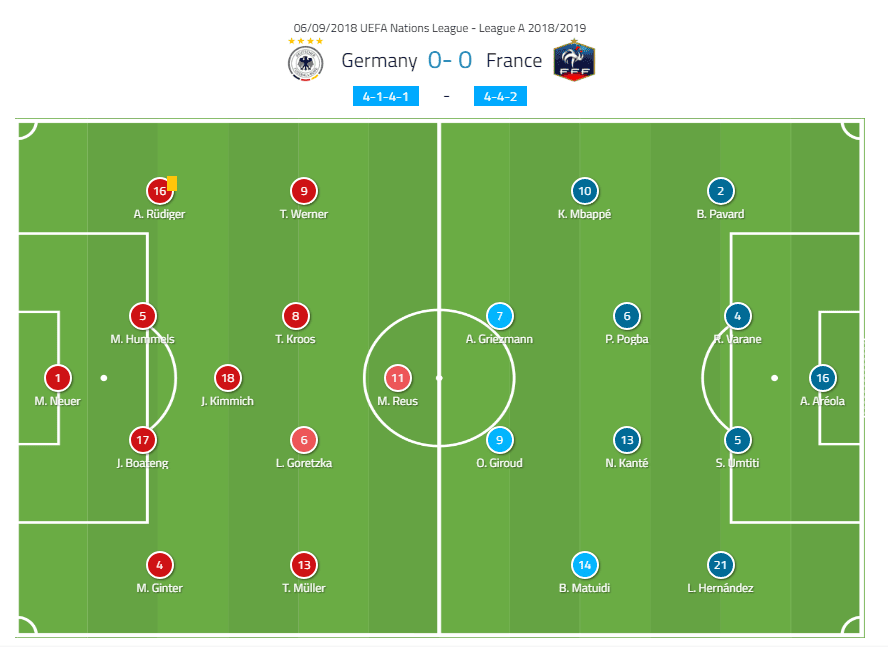
Although Germany defended in a 4-1-4-1, due to the deep-lying positioning of Kroos in possession, the German system resembled a 4-2-3-1 in the attacking phase.
The wingers Werner and Müller both played quite narrow. This was caused by the role of striker Reus. The Dortmund attacker should utilise his combinative skills by dropping into midfield from time to time. The full-backs Ginter and Rüdiger were the only players to provide full width.
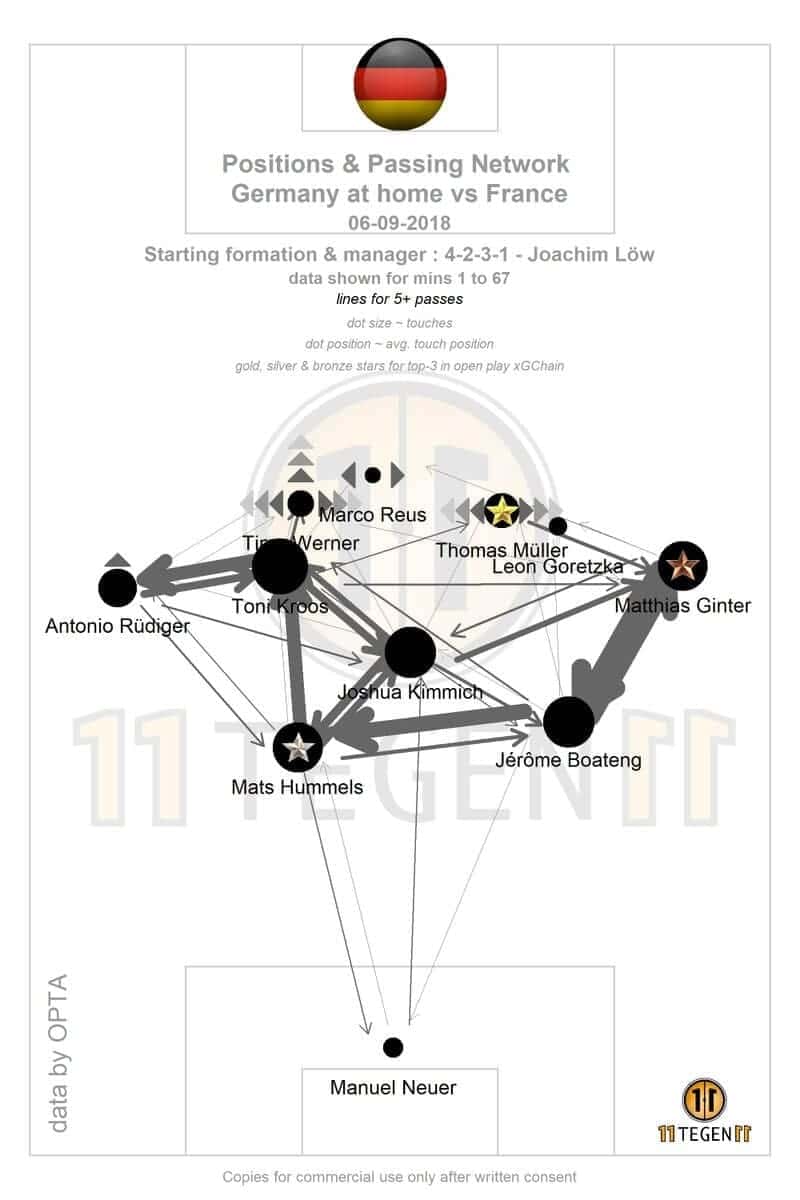
Kimmich with a key role
Different to the World Cup, Kimmich played as the holding midfielder in the Nations League. The Bayern Munich man already played in midfield under Guardiola and Ancelotti and is therefore familiar with the position.
Kimmich as the holding midfielder was a pivotal point in the possession phases of Germany. In moments of French pressing, Kimmich often enabled his teammates to overplay the first line of pressure and showed press resistance on the ball.
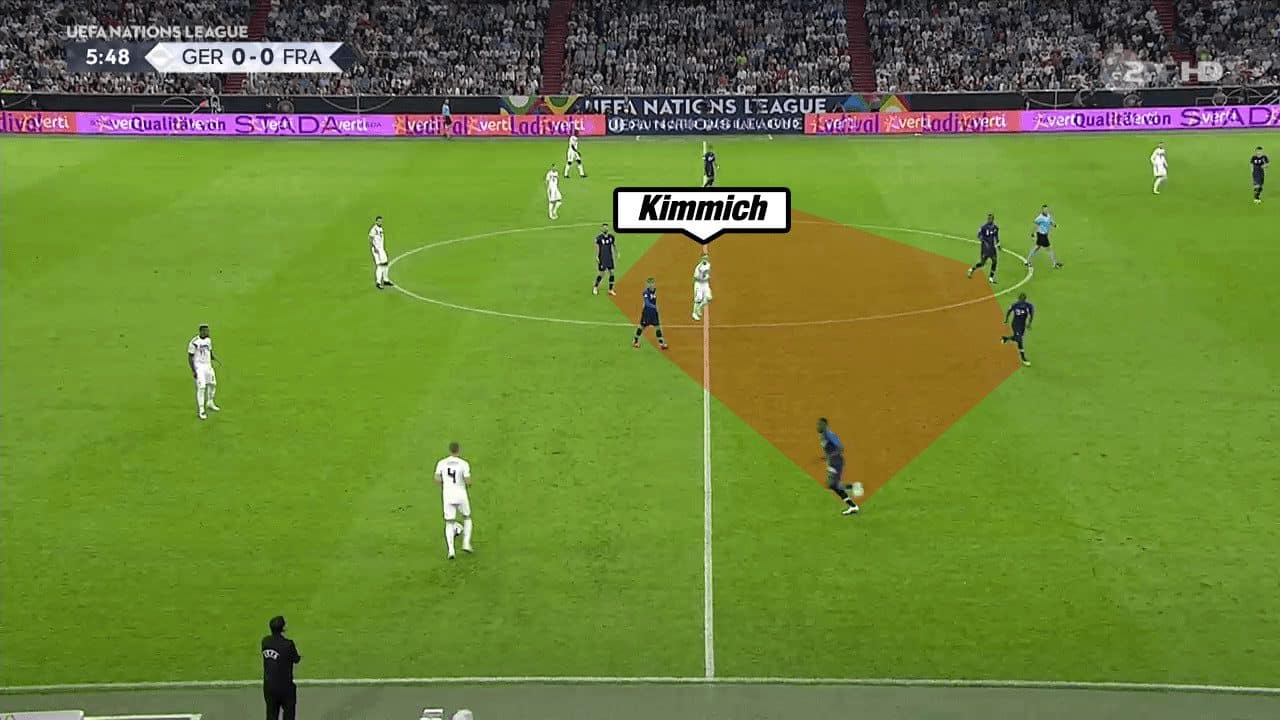
This change seems to be sensible as Kimmich can help Germany to build-up and progress up the pitch with his passing abilities and clever positioning.
Germany’s press
Germany pressed in their 4-1-4-1 formation and tried to force France to play wide.
However, Germany often missed closing down the half space after France switched sides. The German winger often followed the opposition full-back and the French centre-backs had enough space and time to wait for the opportunity to play a pass into the half space. One of the German defenders had to move out of shape to follow the opposition player who occupied the half space. In the scenario below, Rüdiger moves out and gets overplayed with a pass to the overlapping full-back.
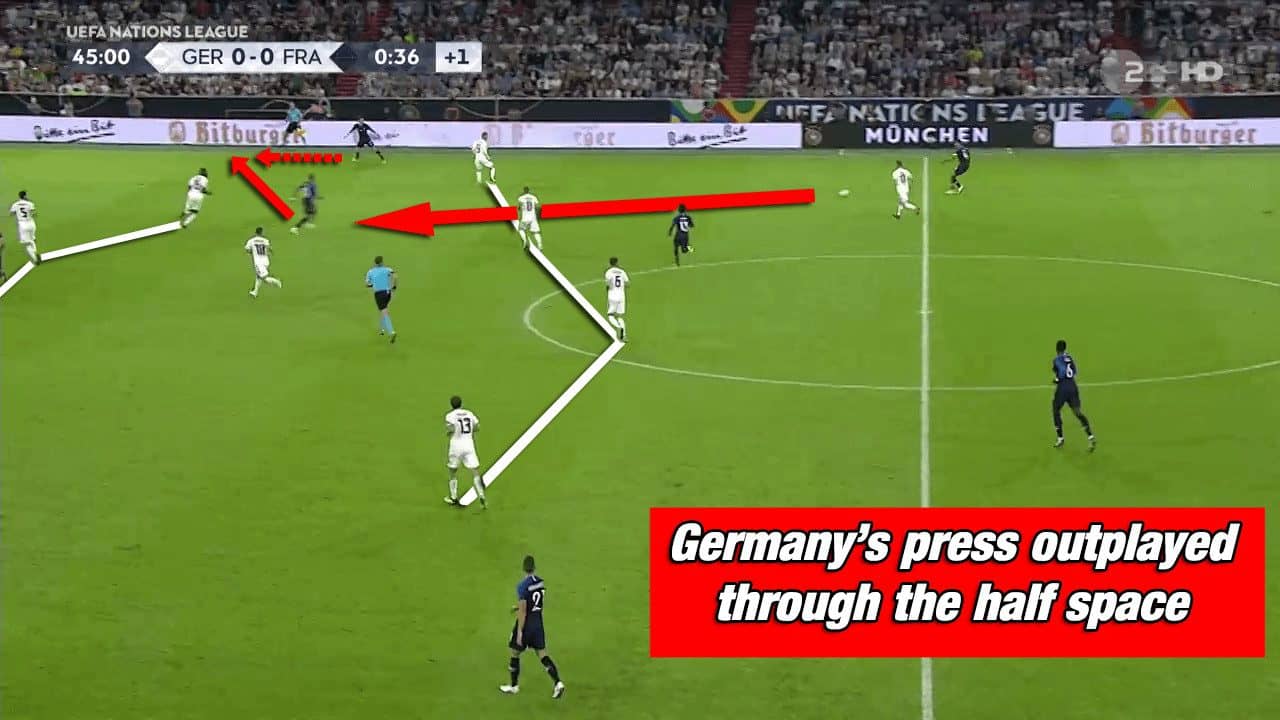
Safety first!
One of the most significant changes of Löw was the line-up with four centre-backs in the back-four. Therewith, Die Mannschaft should gain more defensive stability. The head coach already used centre-backs in full-back positions before, such as in the World Cup in 2014 when Höwedes took over the role of left-back.
As Kroos likes to drop and build-up the game in a deep-lying position, one defender would have to join the attack in more advanced areas of the pitch. However, especially Rüdiger who played on the left side where Kroos used to drop, did not seem to feel comfortable with moving further up the line.
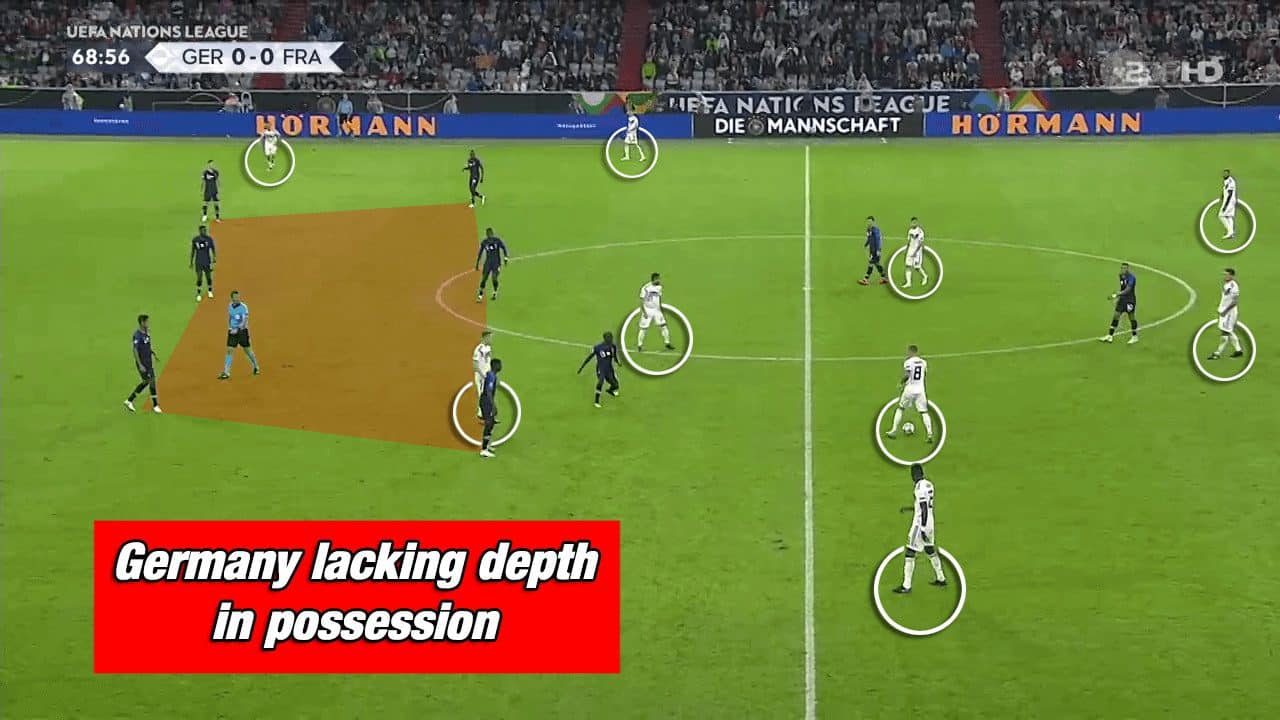
This resulted in the loss of attacking players and means that you can’t get players between the lines. The picture above shows that Germany kept six players in front of the opposition midfield without any need as the ball-carrier is not even pressed by France. Moreover, the positioning of Gündogan and Reus is suboptimal as they are positioned close to each other and neither of them is offering a passing option to overplay the opposition midfield.
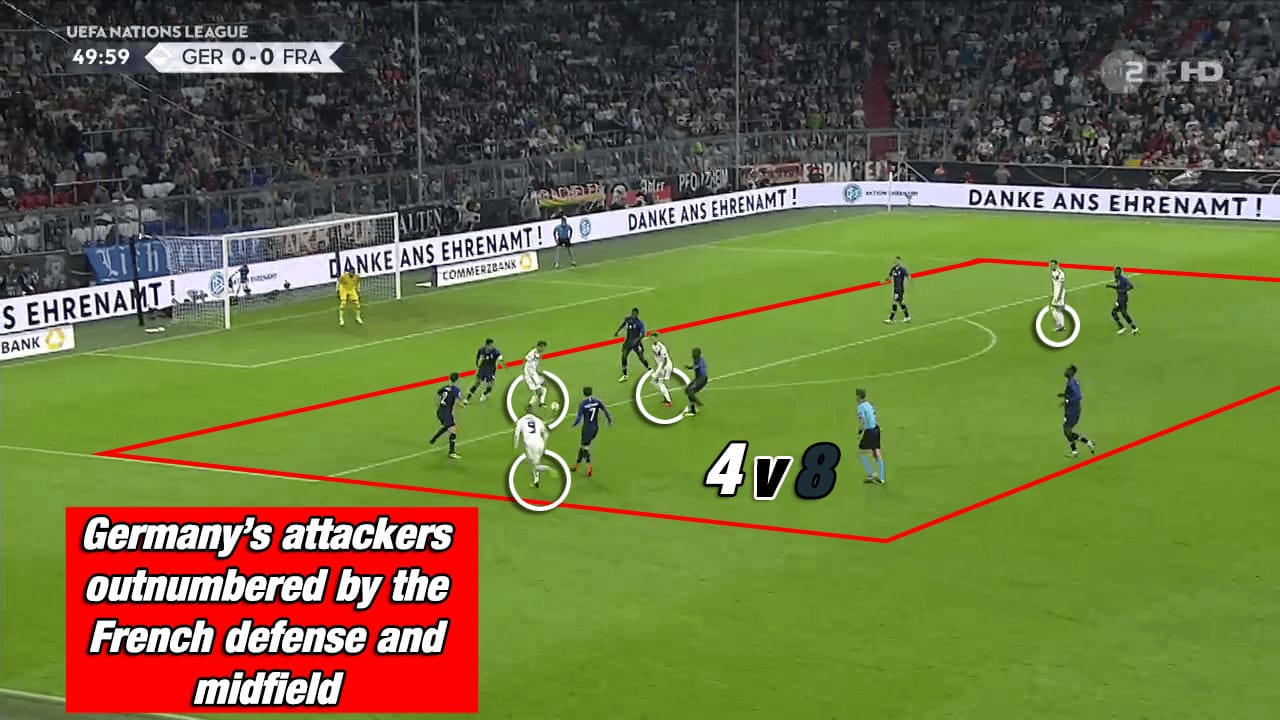
Further up the pitch, Germany basically lacked players. The forward movement of the full-backs and centre-midfielders was either delayed or not even existent. That is the reason why France could easily outnumber the Germans in their defensive third. During the match against France, Germany created some chances but most of them were a product of individual quality or set-piece situations.
The full-back problem and a missing striker
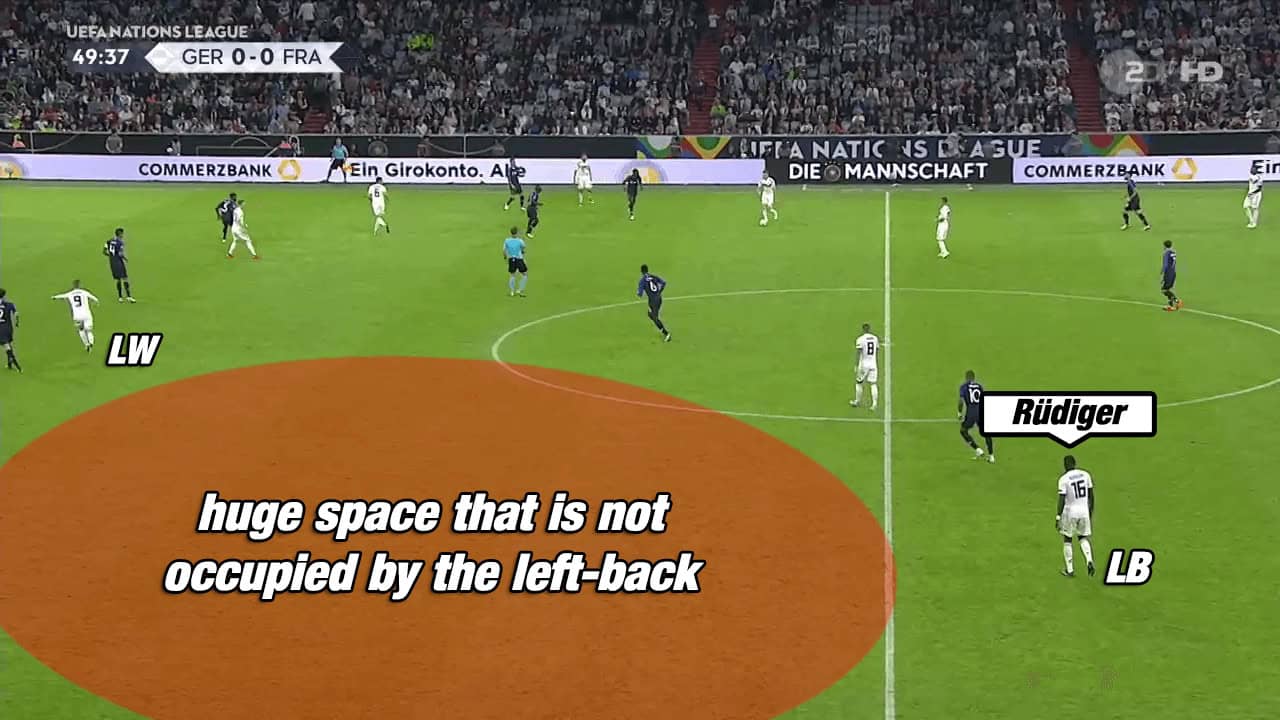
With Rüdiger in the left-back position, Germany missed support in the attack in wider areas. Especially in the second half, Rüdiger was focused on stopping Mbappé from counter-attacking. Therefore he did not feel comfortable to exploit the space further up the pitch. Since winger Werner played in a quite narrow position, the out wide space remained unused.
An often mentioned problem of the German national squad is the missing striker. Lining up with Reus as a false nine requires playing with narrow wingers in order to threaten the opposition goal. In general, this is not an uncommon approach. However, all sides that use this concept have full-backs that support the attacks. Werner usually plays as a striker at Leipzig. But he is in not the typical one-man-striker seen as he likes to drift towards the wing.
Conclusion
Seeking balance, Löw lines up with more defensive players and thereby fewer players that help the team to attack. Whereas this concept might solve the problem of being caught in transition moments, it also causes a new problem: lacking penetration power up front.
The full-back problem could be solved by deploying a formation with a back-three that could cover the wing-backs supporting the attack. Another possibility would be to play with inverted full-backs that build-up in the central defensive midfield. Ginter might be able to take over such a role and Kimmich would have to play as a full-back again. Thereby Germany could make use of their wingers’ dribbling qualities. Brandt, Reus, Werner and Sané would stay wide and could break through in isolated 1v1 situations on the wings.
The radical change of Joachim Löw was not more than a change of formation and a decrease in risk. It does not seem like Löw has found a system that fits the German players. Therefore it will remain to be seen what tactical adjustments Joachim Löw will make in the near future.

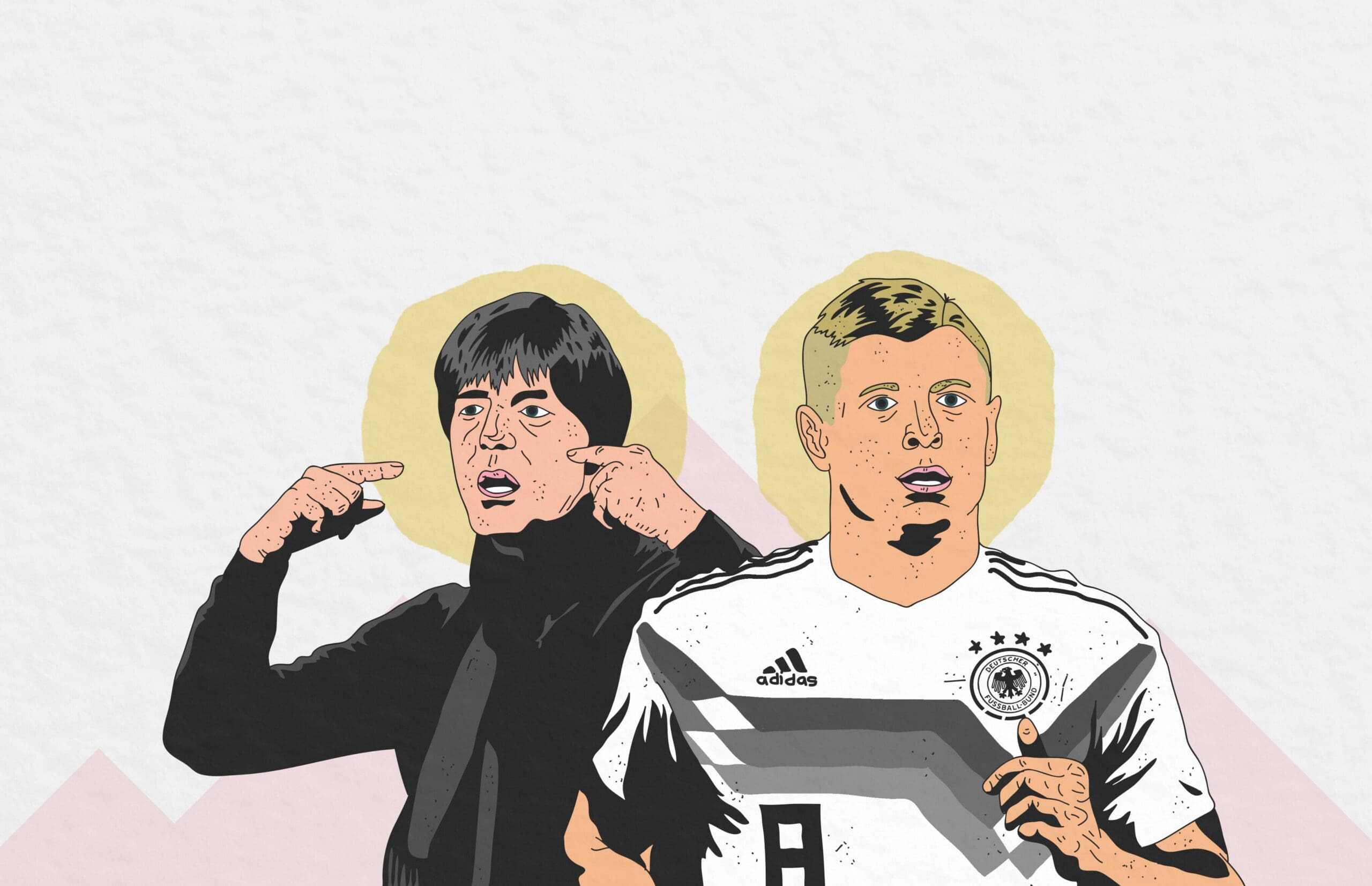



Comments